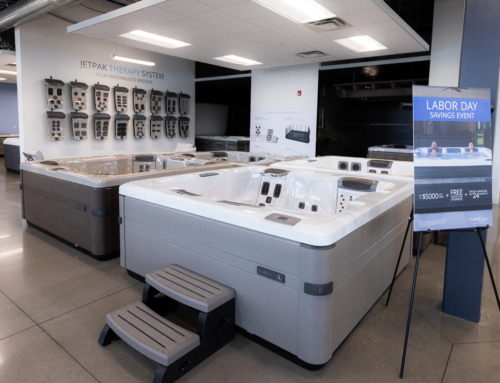Sure we’re not in medicine, but we all know a cure can’t be prescribed without a thorough diagnosis. It’s the same in sales. Selling through presentation only works when you know what problem your products can solve for the customer.
Discovery is a key step in every successful spa retailer’s sales process. This is when you aim to understand each customer’s pain points. By doing so, you can convince them that your products’ benefits would directly respond to their needs and ultimately improve their lives.
Selling through presentation only works when you know what problem your products can solve for the customer.
Conference Board’s study shows that 57% of the sales process is complete by the time you are first contacted by a prospect. So it’s critical that you make the most of the the time you do have face-to-face with your customers. This starts with prospect qualification.
What’s the goal of qualifying? According to Hubspot strategist Jamie Oetting, it’s to determine whether or not the prospect is worthy of the time and effort it would take you to convert him into a customer. Qualifying prospects means finding out who they are, what they do, why they want a spa, and what they really need—all while maintaining control of the conversation.
Every veteran salesperson knows that close-ended questions lead to one-word answers that won’t help you understand your customer very well. It’s the open-ended questions (starting with Who, What, When, Where, Why, or How) that are effective in moving the conversation forward. The challenge is developing this conversational skill so it’s second-nature while coming off as authentic.
To help build conversational muscle, we’re providing this complete list of Discovery stage questions for hot tub retailers.
Getting to Discovery
International sales expert Tony Hughes says, “The most important qualification factor is not any of the qualification questions, but instead whether the buyer will engage in a conversation that enables you develop mutual understanding and trust.”
Before you dive into discovering more about the customer, the salesperson needs to establish a rapport with him/her as someone who’s likeable and trustworthy. In other words, you can’t make it to second base without getting to first base first.
Imagine a new customer walks into your store. Which are you: a welcomer or a greeter? Yes, these are two different things. A greeter is someone who offers “a polite word or sign of welcome or recognition” whereas a welcomer is “glad to entertain or receive; reacting with pleasure or approval to.” Welcoming your customers is a more active way of conveying you’re happy they decided to come to your showroom.
A good policy is to treat each person who walks into your store as you would a guest in your home. You can start with a simple “Welcome to XYZ,” then follow up with “May I ask you a quick question? Most of our business comes from referrals and I was hoping to find out who referred you so I could thank them.”
Other small talk topics can be an opener as well—professional background, education, hobbies, favorite travel destinations, and family are all potential conversation starters.
Questions that Help You Get to Know Your Customer
So here we go. Collected by industry experts, each set of questions is categorized by a specific sales objective that can drive the sale towards closing.
Objective: Tie customer needs to hot tub benefits.
- Why are you interested in investing in a hot tub?
- Have you ever owned a hot tub?
- Do you imagine your spa with a lounger or no lounger?
- When was the last time you were in a hot tub?
- How was your last hot tub experience?
- What have you seen so far that you like, or dislike?
Objective: Know before closing what objections might arise.
- Tell me about your backyard/house?
- I see you are by yourself, what does your significant other think about purchasing a hot tub?
- What is your timeline?
- What size restrictions do you have?
Objective: Understand how to help the customer get the most for their money.
- What is your price range for your hot tub project?
- Is price all that matters to you? What about warranty, service, etc…?
- How important to you is…?
- How would you like to pay for your spa?
Objective: Customers to discover for themselves what personal hot tub benefits matter to them.
- Where do you hold your stress or tension?
- Where do you hurt? Other than that area, what would be the next target area?
- How many people do you want in your hot tub?
- Do you have health issues where you could see a hot tub helping your day to day life?
- How would it feel to have that massage every night?
- Wouldn’t it be nice to have something massage your feet every night without having to beg?
Objective: Customer knows that you understand them and their needs.
- How many people are in your family?
- How many should your hot tub be able to seat?
- Do you like a lounge or non-lounge spa? (Lounges are very contoured and comfortable, however, some people prefer more open seating).
- What did you like about that {Brand X} spa that you {saw/experienced}?
- How important to you is…One lounger, etc.
Next Steps: Selling Value
Once you’ve qualified a customer, the next step is using that information to sell value, not just benefits. Selling a benefit in spas essentially means describing a feature by associating it with some way it improves the customer’s life. While selling benefits is sure to be more effective than selling features, it doesn’t necessarily tie the benefit to its overall significance.
“the ‘value’ that you're selling is not the amount of product for the price, but the...impact of the purchase compared against the purchase cost.”
Selling value on the other hand means starting with the customer’s goal and connecting that to a particular benefit. As Inc.com puts it, “the ‘value’ that you’re selling is not the amount of product for the price, but the…impact of the purchase compared against the purchase cost.”
Here’s an example: “Isn’t your arthritis relief worth what ends up being just a few dollars a day over the lifetime of the hot tub?” or
“Think of how much family time a spa would offer over its lifetime compared to the cost of a single family vacation that typically lasts less than a week.”
When the value you’re selling is significant enough to make it a priority for the customer, you end up making the sale. And making someone happy. Which is really what our business is all about.









Informative